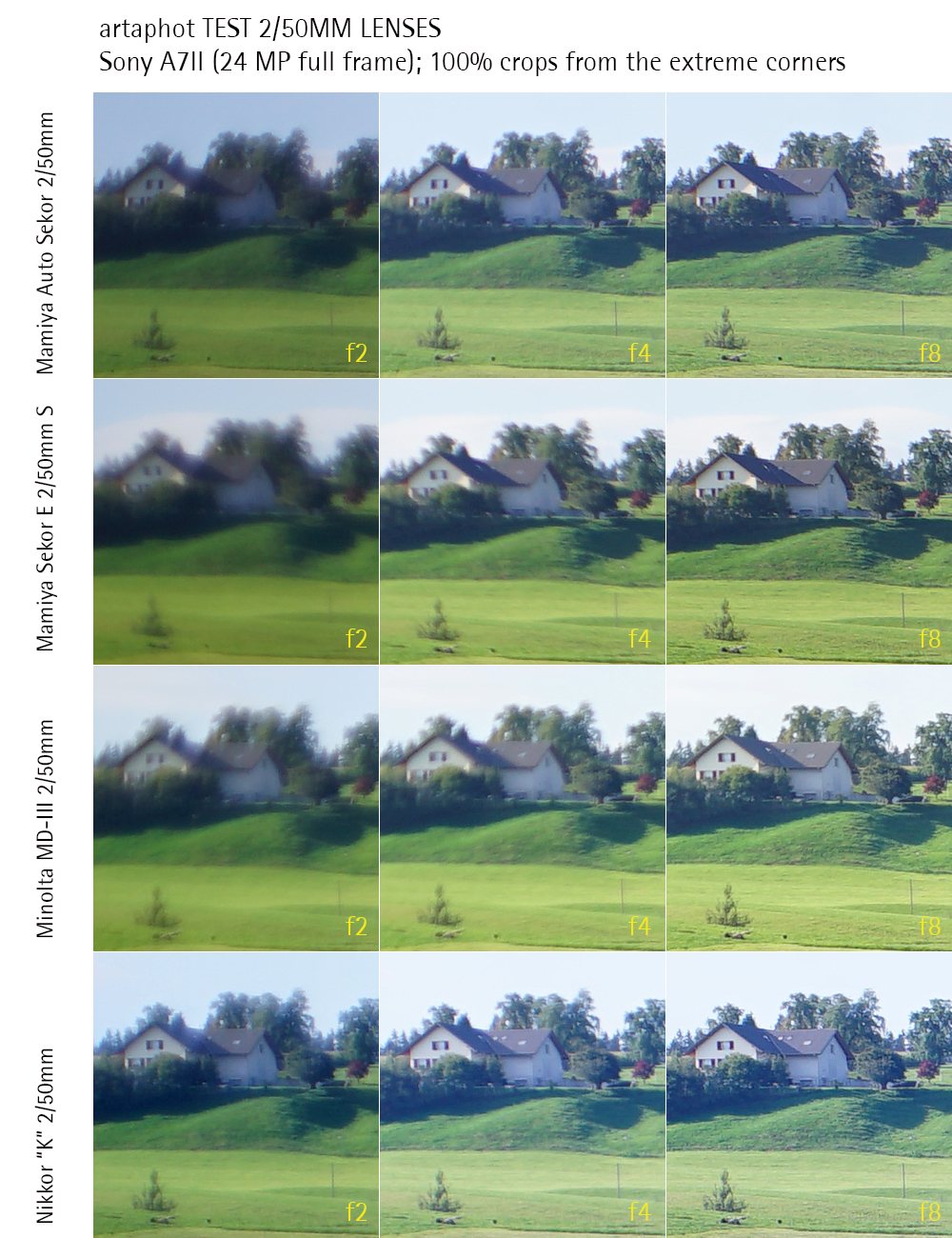The Mamyia Sekor E 2/50mm and its successor, the Sekor E 2/50mm S shown below, are the last descendants of an illustrous series of 2/50mm lenses from Mamiya. The Sekor E 2/50mm is a classical double Gauss lens with six lenses and four elements. At a mere 135 g it is one of the lightest SLR lenses I know. While the outer parts of the lens barrel are made from polymers, the bayonet mount as well as the focus thread are made from aluminum. Like most fast normal lenses the E 2/50mm has an MFD of 0.45 m and a can be stopped down to f16. Unlike most other MF lenses, the Sekor E series has ten electronic contacts which allow for information exchange between camera and lens.
Fifteen years after the well regarded Mamiya Auto Sekor 2/50mm the company would produce another 2/50mm lens, this time clearly a budget lens. Knowing that Mamiya is famous for their normal lenses, I was a bit surprised to see the slightly lower corner performance of the Mamiya-Sekor 2/50mm S lens. There's a simple explanation to that: Mamiya chose to make an excellent "real world" lens, thus allowing for some field curvature and get really great performance for "non-flat" subjects.
I recently have compared the Sekor E 2/50mm S to some other famous normal lenses with the same 2/50mm specs, namely the Auto Sekor 2/50, the Nikkor-H 2/50 and the minolta MD-III 2/50. The results ca be summarized as follows:
1) Mamiya Auto Sekor and Nikkor-H 2/50mm: slightly lower contrast wide open, but very pleasing balance of the aberrations; excellent at f5.6, no CAs
2) Mamiya Sekor E 2/50mm: high contrast and high resolution even at f2, but visible field curvature (no issue for available light reportage), excellent at f5.6
3) Minolta MD-III 2/50mm: slightly lower corner resolution / contrast wide open, excellent at f5.6, and extremely low distortion!
The "modern" Mamiya Sekor E 2/50mm has a remarkable performance even at f2 if one doesn't care about field curvature. Compared to its competitors, "real world" available light images are unusualy clean and clear for an f2 lens, especially if taken at f2.0 (wide open). For landscape images it's best to stop down to f5.6.
 |
MAMIYA SEKOR E 50mm 1:2 S (6 lenses / 4 elements)
|
Wide open, the lens has an excellent center performance with high contrast and equally high resolution. No purple fringing can be seen. Further away from the center and especially at the borders the resolution is dropping. Unlike with other lenses, this is mainly caused by field curvature. Therefore the "low perfomance" in the image corners seen in my standard test below doesn't tell the entire story.
Anyway - fifteen years after the Auto Mamyia Sekor 2/50mm, Mamyia would produce another 2/50mm lens, this time clearly a budget lens. Knowing that Mamiya is famous for their normal lenses, I was a bit surprised to the somehow lower-than-expected performance of the Mamiya-Sekor 2/50mm S lens. There's a simple explanation to that: Mamiya chose to make an excellent "real world" lens, thus allowing for some field curvature, and get a really great performance for "non-flat" subjects. Look at this:
It's obvious that - as long as we ignore field curvature which is hardly an issue when shooting reportage in available light - the Sekor E 2/50mm is an excellent lens and beats the Nikkor when it comes to contrast and details at f2.




